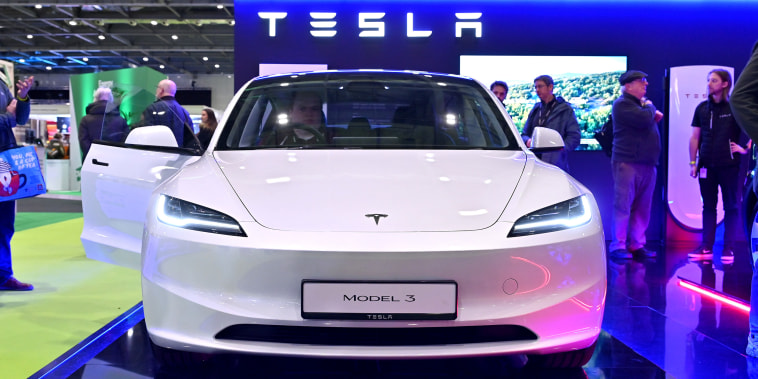In a surprising turn of events for Tesla, the electric vehicle company’s shares recently took a hit following an 8.5% drop in deliveries compared to the previous year. This downward trend in Tesla’s numbers has inevitably sparked concerns among investors and analysts alike, prompting a closer examination of the potential factors behind this decline.
One key aspect to consider is the impact of ongoing supply chain challenges faced by Tesla, an issue that has plagued numerous industries worldwide in the wake of the Covid-19 pandemic. Disruptions in the supply chain can lead to delays in production and ultimately affect the company’s ability to meet customer demand in a timely manner. Tesla’s reliance on a global network of suppliers for essential components means that any hiccups in the supply chain can have a significant ripple effect on its operations.
Furthermore, the current semiconductor shortage has further exacerbated the challenges faced by Tesla and other automakers. The shortage of crucial semiconductor chips has slowed down production across the industry, leading to reduced output and longer wait times for customers. Tesla’s inability to secure an adequate supply of these chips has directly impacted its delivery numbers, as the company struggles to keep up with the growing demand for its vehicles.
Another factor that may have contributed to the drop in Tesla’s deliveries is increased competition in the electric vehicle market. As more automakers enter the EV space with their own offerings, Tesla is facing stiffer competition than ever before. Established players like Ford, Volkswagen, and General Motors are ramping up their electric vehicle production, presenting a formidable challenge to Tesla’s market dominance. The growing array of choices available to consumers in the EV market means that Tesla must work harder to retain its customer base and attract new buyers.
Additionally, macroeconomic factors such as inflation and rising commodity prices could also be putting pressure on Tesla’s bottom line. Inflationary pressures can drive up production costs, making it more challenging for companies like Tesla to maintain profitability. The recent surge in commodity prices, particularly for materials like lithium used in battery production, could further strain Tesla’s margins and impact its financial performance.
Despite the challenges that Tesla is currently facing, it is essential to keep in mind the company’s long-term prospects and its potential for growth. Tesla’s innovative technology, strong brand reputation, and ambitious plans for expansion, including the development of new models and increased production capacity, position it favorably for future success. By addressing the current hurdles in its path, Tesla can navigate through this period of turbulence and emerge stronger on the other side.
In conclusion, while Tesla’s recent drop in deliveries and subsequent share price decline may raise concerns among investors, it is crucial to take a holistic view of the factors at play and consider the broader context in which the company operates. By addressing challenges such as supply chain disruptions, semiconductor shortages, increased competition, and macroeconomic pressures, Tesla can adapt and thrive in a rapidly evolving market environment. The electric vehicle industry is poised for continued growth, and Tesla’s pioneering spirit and innovative drive are likely to play a pivotal role in shaping the future of sustainable transportation.
